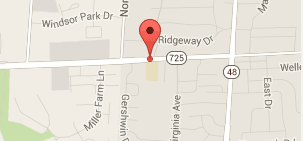What Actually Is A Chapter 13 Bankruptcy?
A chapter 13 bankruptcy is the reorganization of your debt over a period of three to five years.
What Is A Chapter 13 Discharge?
At the end of the bankruptcy case, the court will grant a discharge to the debtor and that’s when the debts are officially eliminated.
What Kinds Of Debts Are Relieved By A Chapter 13 Bankruptcy?
Debts to unsecured creditors such as medical bills, credit cards, utility bills, rent, and other miscellaneous debs are relieved. Also, if you have a vehicle payment, it will be paid in a chapter 13, and so will debts that are owed to taxing authorities, such as the IRS.
Is There Any Debt Which Is Not Dischargeable In A Chapter 13 Bankruptcy?
Student loans, child support, and spousal support are not dischargeable.
Will I Lose All Of My Property And Assets In A Chapter 13 Bankruptcy?
Most people don’t lose any property in a Chapter 13. The idea behind the reorganization is to be able to keep everything, even if you have a car that is paid off or a house that is paid off. Even if your house payment is behind, it gives you an opportunity for the payments to be caught up while in the bankruptcy.
May I Keep All My Property In A Chapter 13 Without Paying Off My Creditor?
Typically, if it’s a secured debt, the secured creditor will be entitled to get paid. Otherwise, they would be able to take the property. There are some exceptions to that. In certain circumstances, we are able to get the principal amount reduced on a vehicle, if it was purchased more than 910 days before the filing of the bankruptcy, or if it was refinanced at some point. Then we are able to get it at the current value as opposed to the loan amount. For instance, if somebody owes $15,000 and the value is $10,000 for the car, we are able to reduce the loan to $10,000. Also, if there is a second mortgage or a third mortgage, many times we are able to have them treated as unsecured debt. We have to first look at the value of the individual’s home and what the first mortgage is to determine whether or not that is possible in each case.
What Are The Requirements To Be Eligible To File For A Chapter 13 Bankruptcy?
There are requirements for filing and requirements for discharge. To be eligible for a discharge, you must not have a discharge of a previous chapter 7 that was filed in the past four years or filed within 2 years for a chapter 13 and you are required to have some form of income to fund the payment plan. For filing, most people are able to file a chapter 13 at any time, depending on what they are attempting to accomplish. If they are not eligible for a discharge, then their debts would still survive the bankruptcy. The filing is all it takes to stop the lawsuits, garnishments, repossessions and/or foreclosures.
How Does Filing A Chapter 13 Bankruptcy Affect Lawsuits Or Any Attachments That Have Already Been Filed Against Me?
Once the case is filed, all lawsuits are stopped, as well as all garnishments. Generally, it has the effect of complete annihilation of those things even before the discharge can be entered.
For more information on Chapter 13 Bankruptcy In Ohio, a free initial consultation is your next best step. Get the information and legal answers you are seeking by calling (937) 247-6447 today.
Bankruptcy Overview
- Alternatives To Bankruptcy
- Avoiding Auto Repossession
- Avoid These Bankruptcy Mistakes
- Bankruptcy And Credit Card Debt
- Bankruptcy And Medical Bills
- Chapter 13 Bankruptcy
- Chapter 13 vs. Debt Consolidation
- Chapter 7 & Chapter 13 Differences
- Chapter 7 Bankruptcy
- Discharging Lawsuits & Judgments
- Filing Bankruptcy A Second Time
- Preventing Utility Shut-Off
- Preventing Wage Garnishment
- Stopping Creditor Harassment
- Stopping Home Foreclosures
- The Bankruptcy Process
- Your Credit Rating After Bankruptcy
- Bankruptcy FAQs
- Can I Discharge Student Loans?
- Can I Discharge Taxes?
- What Are The Dangers Of Falling Behind On Business Taxes?
- Is Bankruptcy The Right Choice For Me?
- What Exactly Is An Offer In Compromise?
- Does My Spouse Have To Be Listed On The Financial Form We Turn Into The IRS?
- Should Spouses Both File?
- What About Secured Debts?
- What Property Can I Keep?
- Will My Employer Know I Filed?
- Bankruptcy And Divorce
- Bankruptcy & Divorce Article





